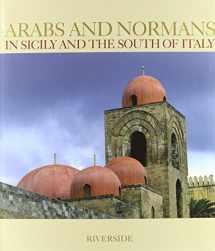
Arabs and Normans in Sicily and the South of Italy
Book details
Summary
Description
Sicily has been at the crossroads of the Mediterranean for thousands of years. As close to Africa as it is to many parts of Europe, and directly astride major sea routes, it has been a convenient landfall for both merchants and warriors. Its invasion in the year 827 A.D. by Muslim armies from North Africa set the stage for a fascinating interplay of cultures. As these Arab and Berber soldiers slowly conquered Sicily and extended their reach to parts of the Italian mainland, they came in contact with, and for some two hundred years ruled over, Greek-speaking Orthodox Christians loyal to the Byzantine emperor in Constantinople, Latin-speaking Christians obedient to the pope in Rome, and small but significant communities of Jews. As the fortunes of attackers and defenders ebbed and flowed, fortresses and castles surrendered, cities and towns changed hands repeatedly, and local populations found themselves subject to first one and then another ruler, sometimes in quick succession. Despite the often brutal violence, victors and vanquished managed an uneasy accommodation in which different languages, multiple religions, and several ethnicities could coexist. Adding themselves to this mix, groups of Norman mercenaries arrived in southern Italy early in the eleventh century. They quickly found employment with one or another of the local Latin-speaking Longobard princes who were in constant conflict with each other and who also had to contend with a Greek-speaking Byzantine empire that was trying to expand its territory on the Italian mainland. The descendants of Viking raiders who had settled in the French province of Normandy, and kin to those who invaded England under William the Conqueror in the year 1066, these Normans, or Norsemen, were fierce fighters and soon began to accumulate power and influence in the Italian south. Muslims remained in control of Sicily, but the Normans saw their prospects improve with the arrival of Robert de Hauteville, a military leader of great energy and ability known to history as Robert Guiscard, or Robert the shrewd one. With his younger brother Roger, later known as the Great Count, he eventually conquered Sicily and large parts of southern Italy. Roger's descendants Roger II, William I, and William II ruled in Sicily as kings until the late twelfth century. Very sympathetic to Muslim culture, in their dress and in their tastes they were more like Oriental potentates than European monarchs. Served by a civil bureaucracy largely staffed by Muslims that drafted documents in Latin, Greek, and Arabic, these Normans presided over a monumental building program that produced some of the most breathtakingly beautiful mosaics and building interiors in the world. Incorporating both Christian and Muslim motifs, these emphasized their divine right to rule as well as the luxury and magnificence of their court, in a style and manner meant to echo imperial Byzantium and the splendor of the East.


We would LOVE it if you could help us and other readers by reviewing the book
Book review



